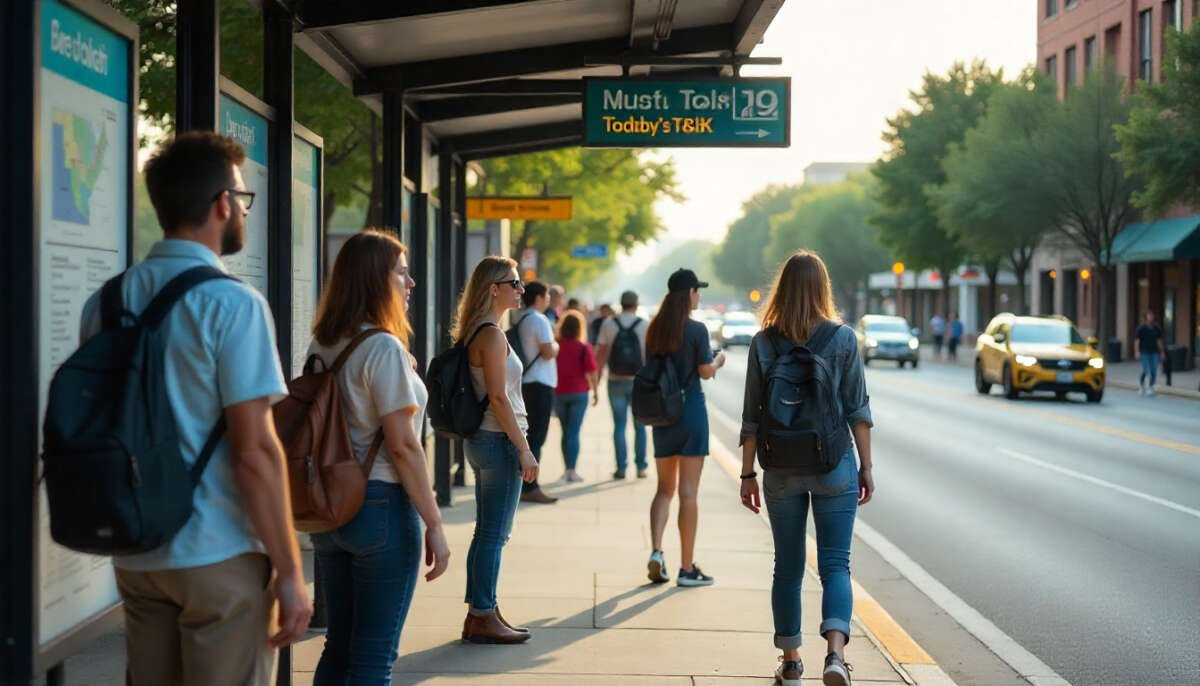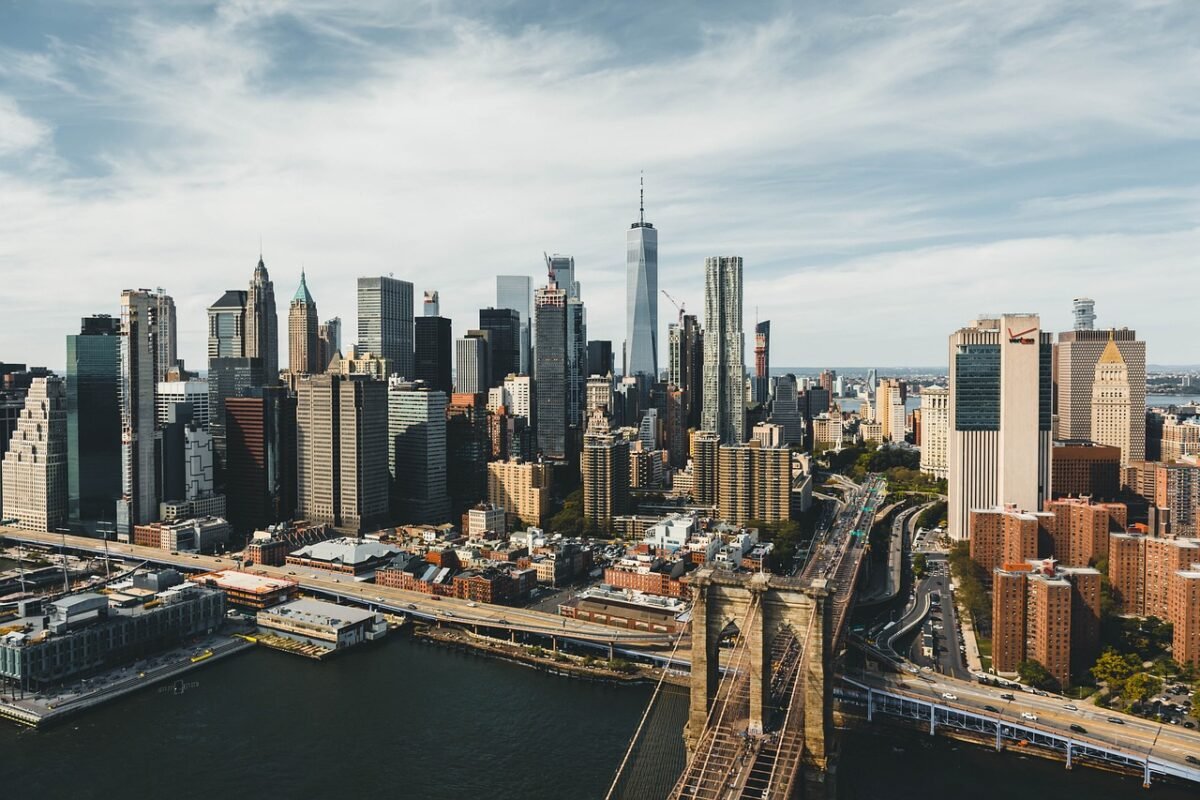If you’re living in Texas or planning a trip in 2025, one of the first things you’ll wonder is: “How do I get around without a car?” Texas is famous for its wide highways and car culture, but that doesn’t mean public transportation isn’t available. In fact, the Lone Star State has been steadily improving its public transit networks to make commuting easier for residents and travelers. This complete guide will walk you through everything you need to know about using public transport in Texas—covering major cities like Dallas, Houston, Austin, San Antonio, and Fort Worth. You’ll learn about buses, trains, light rail, streetcars, ride services, and even airport connections. By the end, you’ll have the confidence to explore Texas without depending on a car.
Texas is the second-largest state in the U.S. by area, which makes traveling across it quite a challenge. While most Texans own cars, public transit is becoming increasingly important due to:
Population growth – Texas is adding thousands of new residents each year.
Traffic congestion – Cities like Houston and Dallas are notorious for traffic jams.
Affordability – Using buses and trains is often cheaper than owning a car.
Sustainability – Public transport reduces carbon emissions compared to single-passenger vehicles.
If you’re a student, a tourist, or even a professional who wants to save on gas and parking, public transit can be your best friend.
Public Transport in Major Texas Cities
Since Texas doesn’t have one statewide transit system, each major city operates its own. Below, we’ll break them down by city.
1. Dallas – DART (Dallas Area Rapid Transit)

Dallas has one of the largest light rail systems in the U.S., run by DART. It covers 700 square miles and connects downtown with the suburbs.
Options in Dallas include:
Light Rail: Four color-coded lines (Red, Blue, Green, and Orange).
Buses: Over 90 routes across the Dallas metro area.
Streetcars & Trolleys: The Dallas Streetcar connects downtown to Oak Cliff.
Paratransit Services: For people with disabilities.
You can plan your trip using the official DART website.
Tickets & Passes (2025):
2-hour pass: $3
Day pass: $6
Monthly pass: $96
- The GoPass app allows you to buy tickets, track buses, and plan trips digitally.
2. Houston – METRO

Houston’s METRO system covers the nation’s fourth-largest city. Despite Houston being car-centric, METRO has made big improvements in recent years.
Options in Houston include:
Light Rail (METRORail): Three lines (Red, Green, and Purple) connecting downtown, universities, and medical districts.
Buses: Over 80 routes including local, park & ride, and express services.
METROLift: Accessible transit for disabled riders.
You can learn more on the Houston METRO official site.
Tickets & Passes (2025):
Single ride: $1.25
Day pass: $3
Monthly pass: $50–$95 depending on the service
- For tourists, the METRORail is particularly useful because it connects major attractions like the Museum District, Midtown, and the Texas Medical Center.
3. Austin – Capital Metro (CapMetro)

Austin’s tech-driven growth has made traffic one of the city’s biggest headaches. Luckily, CapMetro has expanded to help locals and visitors.
Options in Austin include:
MetroRail Red Line: A commuter rail running from Leander (northwest) to downtown Austin.
MetroBus: More than 80 local routes across the city.
Rapid Buses: Faster service with dedicated lanes.
Pickup Service: On-demand shuttles in certain neighborhoods.
Visit CapMetro.org for routes and schedules.
Tickets & Passes (2025):
Local bus: $1.25 per ride
Day pass: $2.50
Monthly pass: $41.25
- Austin also plans to expand with Project Connect, a new light rail system expected to reshape public transport over the next decade.
4. San Antonio – VIA Metropolitan Transit

San Antonio is best known for the Alamo and River Walk, but if you’re exploring beyond downtown, you’ll need VIA Metropolitan Transit.
Options in San Antonio include:
Buses: Over 90 routes serving the city and nearby suburbs.
VIA Primo: Bus rapid transit (BRT) line running along Fredericksburg Road.
Special Event Shuttles: Useful for sports games and festivals.
See schedules on the VIA Transit official website.
Tickets & Passes (2025):
Single ride: $1.30
Day pass: $2.75
Monthly pass: $38
- Tourists will find the downtown VIA trolleys especially convenient for sightseeing.
5. Fort Worth – Trinity Metro

Fort Worth runs its own system, Trinity Metro, but it also connects with Dallas via regional trains.
Options in Fort Worth include:
TEXRail: Commuter rail from downtown Fort Worth to Dallas/Fort Worth International Airport (DFW).
TRE (Trinity Railway Express): Jointly operated with DART, connects Fort Worth and Dallas.
The Dash: An electric bus connecting downtown to the Cultural District.
ZIPZONE: On-demand rides similar to Uber/Lyft but through Trinity Metro.
More details at the Trinity Metro site.
Tickets & Passes (2025):
Single ride: $2
Day pass: $5
Monthly pass: $80
- The TRE is one of the best ways to travel between Dallas and Fort Worth without driving.
Airport Connections in Texas

Most major airports in Texas are connected by public transport:
Dallas/Fort Worth International Airport (DFW): Served by DART’s Orange Line and Trinity Metro’s TEXRail.
Dallas Love Field: Connected via DART buses.
Houston George Bush Intercontinental (IAH): Accessible via METRO’s 102 bus.
Austin-Bergstrom Airport (AUS): Served by CapMetro’s Airport Flyer.
San Antonio International (SAT): Served by VIA bus route 5.
- Using these connections can save you money on taxis or rideshares.
How to Pay for Public Transport
Most transit systems in Texas now accept:
Contactless cards (Visa, Mastercard, Apple Pay, Google Pay).
Mobile apps (GoPass, METRO Q, CapMetro App).
Cash (though exact change may be required).
- Tip: Download the local city’s app before you travel—it will save you time and hassle.
Tips for Tourists Using Public Transport in Texas
Plan Ahead – Use Google Maps or official apps to check schedules.
Buy Day Passes – They are usually cheaper if you’ll be riding more than twice.
Stay Safe – Stick to well-lit stations at night.
Mind the Weather – Texas heat can be intense; keep water handy while waiting.
Use Transit for Events – During festivals, games, and concerts, special shuttles are often cheaper than parking.
Future of Public Transport in Texas (2025 and Beyond)
Texas is investing heavily in improving public transportation:
Austin’s Project Connect will introduce light rail lines.
Dallas is expanding its DART Silver Line commuter rail to the suburbs.
Houston plans to expand its bus rapid transit network.
High-speed rail between Dallas and Houston is being discussed, which could cut travel time to under 90 minutes.
- If these projects are completed, Texas could become one of the best-connected states in the U.S.
Final Thoughts
While Texas will probably always be known as a car-first state, public transport is improving fast. Whether you’re a student in Austin, a tourist in San Antonio, or a commuter in Dallas, there are plenty of affordable and reliable options to get around.
By using buses, trains, and shuttles, you can save money, reduce stress, and even experience a side of Texas that most drivers miss.
So next time you’re in the Lone Star State—don’t hesitate to hop on public transport. It might surprise you how convenient it actually is.
Frequently Asked Questions (FAQ)
1. Is public transport in Texas safe?
Yes. Major cities have security and surveillance, but always stay alert in crowded areas.
2. Can I travel between cities using public transport?
Yes, but options are limited. The TRE connects Dallas and Fort Worth, while Greyhound and Megabus cover longer distances.
3. What is the cheapest public transport option in Texas?
Buses are usually the most affordable, with day passes under $5.
4. Do Texas airports have public transport?
Yes. Most airports in Dallas, Houston, Austin, and San Antonio are served by buses or trains.
5. Can tourists rely only on public transport in Texas?
In downtown areas—yes. But if you plan to explore rural Texas, renting a car is more practical.




